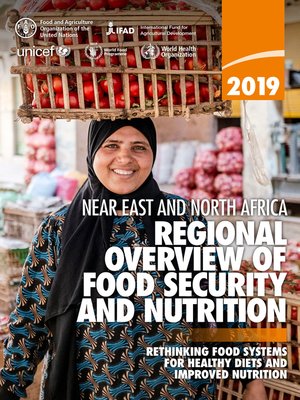Regional Overview of Food Security and Nutrition in the near East and North Africa 2019
ebook ∣ Rethinking Food Systems for Healthy Diets and Improved Nutrition
By Food and Agriculture Organization of the United Nations

Sign up to save your library
With an OverDrive account, you can save your favorite libraries for at-a-glance information about availability. Find out more about OverDrive accounts.
Find this title in Libby, the library reading app by OverDrive.



Search for a digital library with this title
Title found at these libraries:
| Library Name | Distance |
|---|---|
| Loading... |
The past few decades have seen dramatic improvements in the region in access to food, reduction in stunting rates, in premature death and disability caused by communicable, maternal, neonatal, and nutritional diseases. However, the gains in the fight against hunger and malnutrition have reversed in the wake of conflicts and violence that have spread in many parts of the region in the last decade.
Today, nearly 55 million people in the Arab States, 13.2 percent of the population, are hungry and the situation is particularly worrying in countries affected by conflicts and violence: Iraq, Libya, Somalia, Syria, Sudan, and Yemen. Displacements and forced migration are widespread in the region, especially among the growing youth population segment.
Many countries carry a double burden of malnutrition, including overweight and obesity and undernutrition. A high or very high prevalence of stunting in children under the age of five persists in nearly half of the Arab States, while anaemia is a severe public health issue in certain countries. The trends of overweight and obesity continue to worsen for children and adults.
Beyond these numbers, the report explores food systems in the Arab States and the policies that support them. It also explores how the latter have contributed to poor nutritional outcomes by failing to make safe and diversified healthy diets available to all. While there has been significant progress in policies designed to reduce caloric deficiencies in the population, the policy reaction to address existing malnutrition problems, particularly in relation to overweight and obesity,







